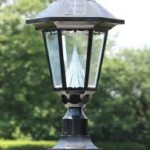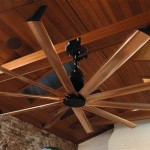How to Run a Natural Gas Line for an Outdoor Fire Pit
Adding a natural gas fire pit to your outdoor space can create a warm and inviting ambiance for entertaining guests or simply relaxing. However, connecting the fire pit to your existing natural gas line requires careful planning and execution. This article will guide you through the steps involved in running a natural gas line for an outdoor fire pit safely and effectively.
Step 1: Planning and Preparation
Before you begin, ensure you have all the necessary permits and approvals from your local authorities. This may include a building permit, gas line installation permit, and any other relevant permits depending on your location.
Next, carefully plan the gas line route. Consider factors such as:
- The distance from the existing gas line to the fire pit location
- Obstacles like trees, landscaping, and walkways
- Accessibility for future maintenance
- The location of the gas meter and shutoff valve
It's recommended to mark the proposed gas line route with flags or spray paint for clarity. Once you have a clear plan, gather the necessary materials including:
- Black iron pipe (schedule 40 or schedule 80, depending on local codes) or copper pipe
- Fittings (elbows, tees, unions, etc.)
- Gas line sealant (pipe dope)
- Gas line tape
- Gas line clamps
- Shut-off valve (for the fire pit)
- Gas line regulator (if required)
- Gas line vent
- Safety glasses
- Gloves
Ensure all materials meet local building codes and industry standards.
Step 2: Connecting to the Existing Gas Line
This step involves connecting the new gas line to your existing natural gas line. If your fire pit is relatively close to the existing line, a direct connection may be possible. However, if the distance is significant, you may need to run the line underground or above ground.
Here's a step-by-step guide for connecting to the existing gas line:
- Turn off the gas supply at the main shutoff valve before beginning work.
- Locate a suitable point on the existing gas line for the connection. This should be accessible and easily worked on.
- Cut the existing gas line using a pipe cutter or appropriate saw (depending on the material) at the planned connection point.
- Clean the cut ends of both pipes thoroughly to remove any debris or burrs.
- Apply a thin layer of pipe dope to the threads of the fittings and the ends of the pipes, ensuring a leak-proof seal.
- Connect the fittings to the existing gas line and the new gas line using appropriate wrenches.
- Tighten the fittings securely, making sure they are properly sealed to prevent leaks.
Step 3: Installing the Gas Line
After connecting to the existing line, you can run the new gas line to your fire pit. The installation process might vary based on whether you're running the line underground or above ground.
If you're running the line underground, you'll need to:
- Dig a shallow trench, typically 18-24 inches deep, following your marked route.
- Place the gas line in the trench, making sure it's securely supported and protected from any potential damage.
- Backfill the trench with a layer of sand or gravel to cushion the pipe and provide drainage.
- Cover the trench with soil or whatever material was originally there, ensuring adequate compaction to prevent settling.
If you're running the line above ground, you'll need to:
- Secure the pipe to the ground or a wall using gas line clamps or straps, spaced according to manufacturer instructions.
- Ensure that the line is run in a straight and level manner with a minimum clearance of six inches from any combustible materials.
- If the line is exposed to the elements, consider using protective coverings to prevent corrosion.
Step 4: Connecting to the Fire Pit
Once the gas line reaches the fire pit location, you'll need to connect it to the fire pit's gas manifold. This step is crucial for ensuring proper and safe operation of the fire pit.
Here's a general guide for connecting the gas line to the fire pit manifold:
- Locate the gas inlet port on the fire pit's manifold.
- Thread a suitable gas line fitting onto the end of the gas line.
- Apply pipe dope to the threads of the fitting and the inlet port.
- Thread the fitting into the gas inlet port and tighten securely, ensuring a leak-proof connection.
- Install the shut-off valve (if not pre-installed) on the gas line near the fire pit manifold for convenient control.
- Install the gas line regulator (if required) before the shut-off valve, making sure it's compatible with the fire pit's required gas pressure.
Step 5: Testing and Inspection
Before using your fire pit for the first time, ensure that the gas line is properly installed and leak-free. This includes inspecting for leaks at all connections and fittings. You can use a soap solution to test for leaks, or a specialized leak detector for more sensitive detection.
If any leaks are found, immediately shut off the gas supply at the main shutoff valve and tighten the fittings or reapply pipe dope as necessary. Once all connections are leak-free, you can slowly turn on the gas supply and test the fire pit.
It's essential to perform a thorough inspection of your fire pit's gas line periodically to ensure it remains safe and functional. Look for any signs of damage, corrosion, or leaks. If you notice any issues, consult a qualified gas line technician to address them promptly.

How To Build A Gas Fire Pit Woodlanddirect Com

How To Build A Gas Fire Pit Woodlanddirect Com

How To Build A Gas Fire Pit Woodlanddirect Com

How To Install A Diy Fire Pit Burner Pan Firepit Outfitter

How To Build A Gas Fire Pit Woodlanddirect Com

Natural Gas Line Installation Portland Barbecue

Gas Pipe Size For Fire Pits

How To Hook Up A Natural Gas Fire Pit

How To Build A Gas Fire Pit Woodlanddirect Com

How To Install A Gas Fire Pit
Related Posts







